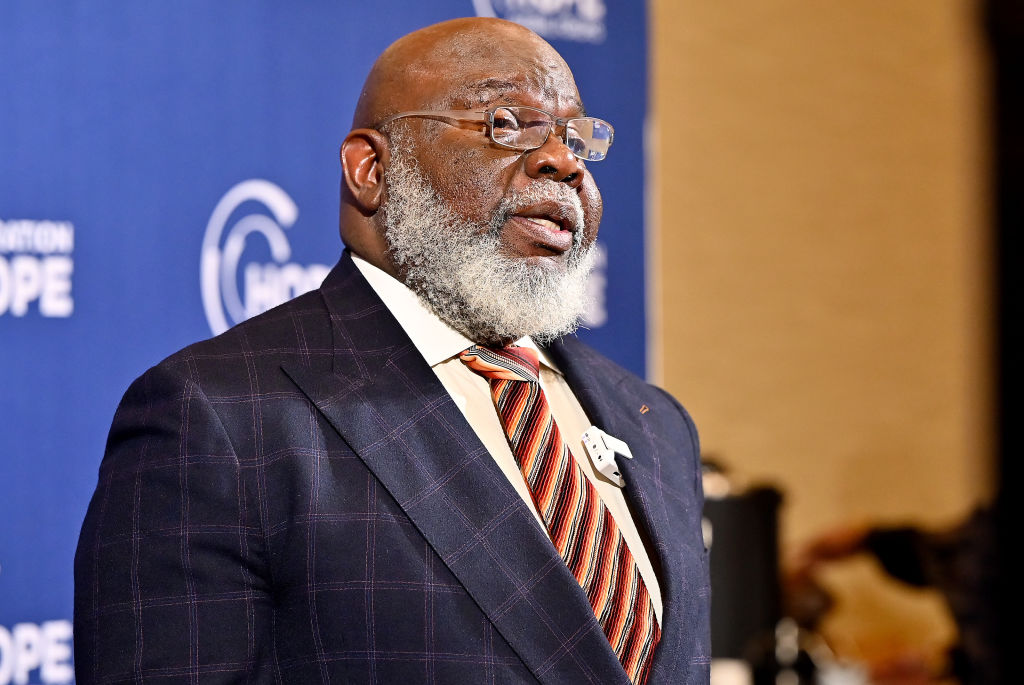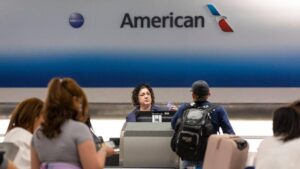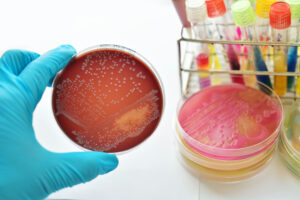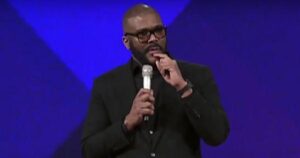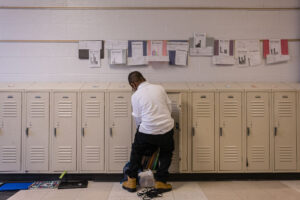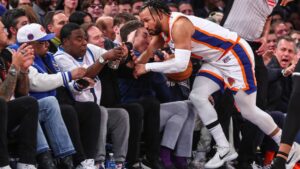Followers of Megachurch pastor and entreprenuer Bishop T.D. Jakes are finding out what really led the pastor to have an emergency health crisis while preaching in church just a few months ago. In an exclusive interview on TODAY Jakes shared that the life-threatening medical emergency he suffered last year was a heart attack.
“I didn’t really realize what was happening to me onstage until I got to the hospital in an ambulance and fussing that it happened onstage, by the way, because I didn’t want it to happen, and the doctor leaned over my ear and said, ‘You had a massive heart attack,’” Jakes told Craig Melvin on TODAY on March 26.
Jakes, 67, was delivering an inspirational message on Nov. 23, 2024, at The Potter’s House, a nondenominational Christian megachurch in Dallas where he is the pastor, when he experienced a medical emergency.
“The reason I didn’t realize it was because I had none of the symptoms that they say,” Jakes told Craig about the heart attack. “No numbness, no sharp pain, no anything. I just kind of drifted off to sleep. I didn’t know what it was, but I almost died.
“(The doctor) said five minutes later, I’d have been dead on arrival,” he continued. “The right side of my heart had completely stopped getting blood at all.”
What Happens When a Heart Attack Hits
When the incident first happened, Jakes was surrounded by staff, family and security that helped quickly usher him to the hospital. But what are you supposed to do if you or someone you love suffers a heart attack in front of you?
According to Mayo Clinic, here’s what you should do:
Call 911 or your local emergency number:
Don’t ignore the symptoms of a heart attack. If you can’t get an ambulance or emergency vehicle to come to you, have someone drive you to the nearest hospital. Drive yourself only if you have no other option.
Take aspirin, if recommended:
Aspirin helps prevent blood clotting. Taking aspirin during a heart attack may reduce heart damage. Don’t take an aspirin unless a healthcare professional says to do so. Don’t delay calling 911 to take an aspirin. Call for emergency help first.
Take nitroglycerin, if prescribed:
If you think you’re having a heart attack and you have a prescription for this medicine, take it as directed while waiting for emergency medical help.
Start CPR if the person doesn’t have a pulse or isn’t breathing:
If you’re untrained in CPR, do hands-only CPR. That means push hard and fast on the person’s chest. Do this about 100 to 120 times a minute. If you’re trained in CPR and confident in your ability, start with 30 chest compressions before giving two rescue breaths.
Use an automated external defibrillator (AED) if one is available and the person is unconscious:
The device delivers shocks to reset the heart rhythm. AEDs come with step-by-step voice instructions for their use. They’re programmed to allow a shock only when appropriate.
Jakes Says He Nearly Died
“I was on my way out,” he shared in the TODAY interview. “Afterwards in retrospect, it was such a privilege to stand on the other side, to get a little glimpse of what it might be like, or at least what it was like in that moment for me. I think it was absolutely amazing.”
He also gave thanks for the prayers he received from his congregation and people around the world.
“While they were praying, the surgeons were operating while I was awake,” he said. “They never put me to sleep. Technology is amazing.”
Craig told him it appears the heart attack has not slowed him down. Jakes detailed plans for upcoming events at the church and a new podcast he is starting.
“No, I’m getting faster because one, I’m older. Two, I’m grateful. Three, I’ve got something to say,” he said.
The Difference Between a Stroke and a Massive Heart Attack
When news of Bishop’s medical emergency first hit social media, many people were commenting that it looked as though he had a stroke, but there are some very important differences between what he actually suffered.
A “massive stroke” and a “massive heart attack” are both serious medical emergencies involving a sudden disruption of blood flow, but they affect different parts of the body: a stroke impacts the brain, while a heart attack affects the heart muscle.
Here’s a more detailed comparison:
Massive Stroke (Brain Attack):
What it is:
A stroke occurs when blood flow to the brain is suddenly interrupted, either by a blockage (ischemic stroke) or a rupture (hemorrhagic stroke).
Symptoms:
- Sudden numbness or weakness, especially on one side of the body.
- Sudden confusion, trouble speaking, or trouble understanding speech.
- Sudden severe headache with no known cause.
- Sudden trouble seeing from one or both eyes.
- Sudden trouble walking, dizziness, or loss of balance or coordination.
Consequences:
Can lead to permanent neurological damage, including paralysis, speech difficulties, and cognitive impairments.
Treatment:
Requires immediate medical attention, including clot-busting medication (tPA) for ischemic strokes, or surgery to stop the bleeding in hemorrhagic strokes.
Recovery:
Recovery can vary greatly depending on the severity and location of the stroke, and may involve extensive rehabilitation.
Massive Heart Attack (Myocardial Infarction):
What it is:
A heart attack occurs when blood flow to the heart muscle is suddenly blocked, usually by a blood clot.
Symptoms:
- Chest pain or discomfort that may feel like pressure, tightness, pain, squeezing, or aching.
- Pain or discomfort that spreads to the shoulder, arm, back, neck, jaw, teeth, or sometimes the upper belly.
- Cold sweat.
- Fatigue.
- Heartburn or indigestion.
- Lightheadedness or sudden dizziness.
- Nausea.
- Consequences:
- Can lead to permanent heart damage, heart failure, and even death.
Treatment:
Requires immediate medical attention, including medications to dissolve the clot, and potentially procedures to open the blocked artery (angioplasty or bypass surgery).
Recovery:
Recovery depends on the severity of the heart attack and the extent of heart damage, and may involve lifestyle changes and medications.

